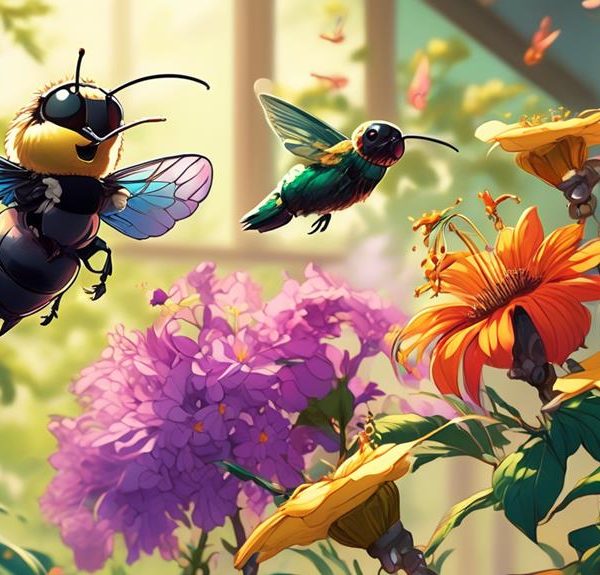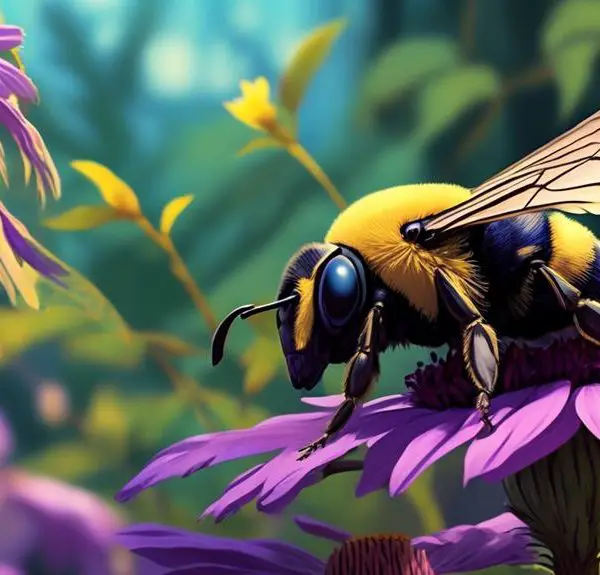Feast your eyes on the Large Carpenter Bee, Xylocopa, a giant among insects with a significant role in our ecosystem, begging further exploration.
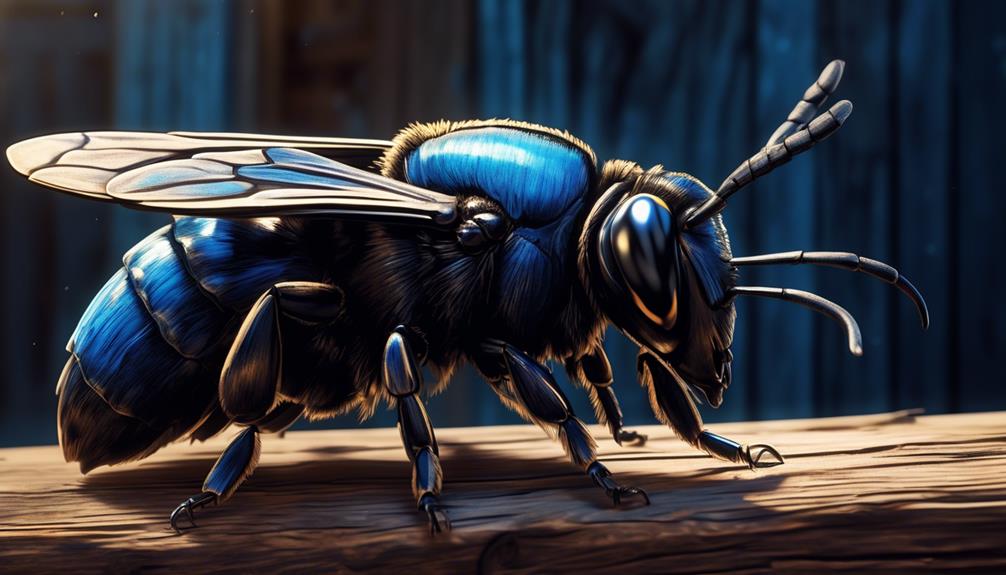
Large Carpenter Bee Scientific Name
You might think you've seen every bee in the book, but the Large Carpenter Bee, scientifically known as Xylocopa, is like a stealthy giant hiding in plain sight. They're not just your average backyard buzzing insect.
These sizeable creatures, with their fascinating behaviors and intriguing physical characteristics, have a far-reaching influence in the world of ecology. As we journey through the intricate taxonomy of this remarkable bee, you'll discover why they're not merely large but also play a large role in our ecosystem.
And you might be left wondering, what else don't I know about these enigmatic insects?
Key Takeaways
- The scientific name for the Large Carpenter Bee is Xylocopa.
- Xylocopa belongs to the animal kingdom, phylum Arthropoda, class Insecta, and order Hymenoptera.
- The Large Carpenter Bee is part of the Xylocopa genus, which includes approximately 500 species.
- Xylocopa virginica is the prevalent species of Large Carpenter Bee in North America.
Understanding the Large Carpenter Bee
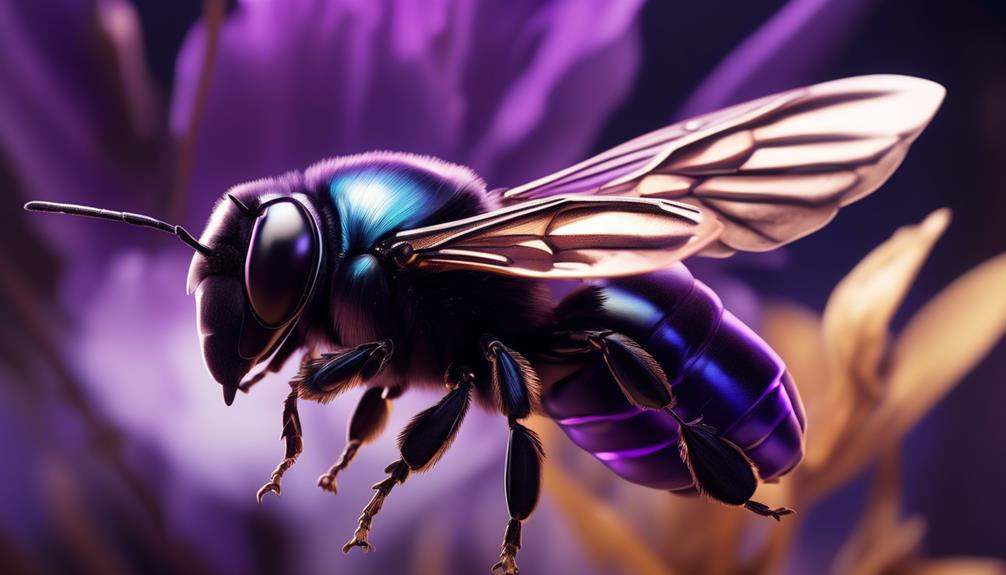
While you may be familiar with the common honeybee, it's crucial to understand the unique characteristics and behaviors of the large carpenter bee, scientifically known as Xylocopa. Unlike honeybees, carpenter bees are solitary creatures. Instead of living in large colonies, each female bee makes her own nest, generally in a piece of wood.
You'll notice that these bees are quite large, often reaching up to an inch in length. Their bodies are robust and metallic, usually black, sometimes with purple or green hues. Unlike the fuzzy honeybee, carpenter bees have a noticeably shiny, hairless abdomen.
It's in their nesting behavior where you'll see the real difference. While honeybees build wax hives, carpenter bees bore into wood to create their nests. Don't panic if you see them around your home, though. They're not usually a threat to structures, as they prefer softer woods, and it's rare for them to bore into treated lumber.
Understanding these unique behaviors and characteristics allows you to appreciate the carpenter bee's role in our ecosystem. They're efficient pollinators, making them essential for maintaining biodiversity and the health of many plant species.
Scientific Classification of Xylocopa
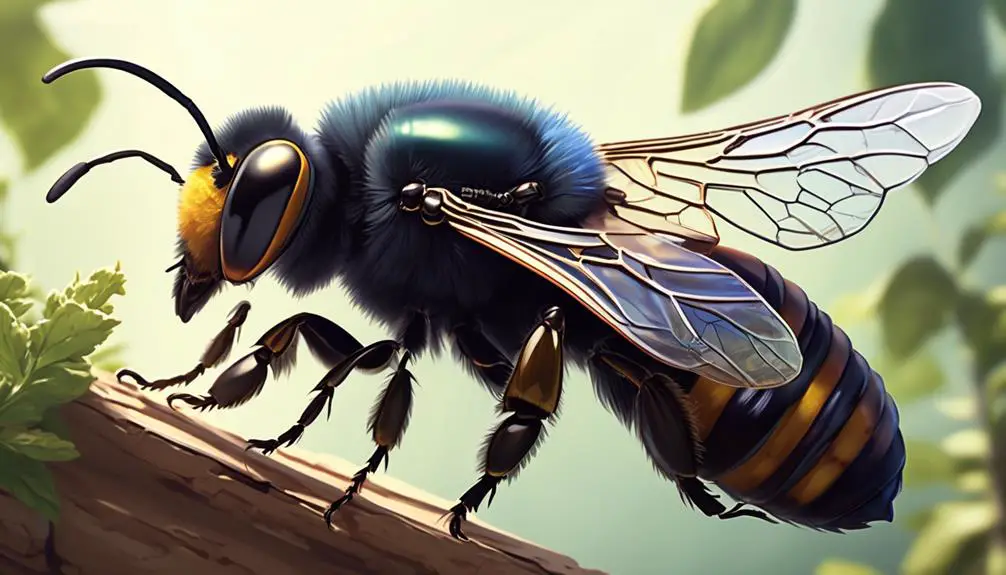
To fully appreciate the carpenter bee, let's delve into the scientific classification of Xylocopa, starting with its position in the insect kingdom. This large, robust bee falls under the animal kingdom, in the phylum of Arthropoda, which encompasses invertebrates with exoskeletons and segmented bodies. Further down, Xylocopa is classified under the class Insecta and order Hymenoptera, which includes ants, wasps, and bees.
The family Apidae, known for honey and bumble bees, also houses the Xylocopa genus. Now, these aren't your typical honey producers. Instead, they're solitary bees, choosing to nest in dead wood or bamboo, hence their common name, carpenter bees.
Diving deeper, there are approximately 500 species within the Xylocopa genus, each with unique characteristics. For instance, Xylocopa virginica, the Eastern carpenter bee, is prevalent in North America. It's easily noticed due to its size and shiny, black abdomen.
Physical Characteristics of Large Carpenter Bees

In observing large carpenter bees, you'll notice their distinct physical traits that set them apart in the insect world. Xylocopa, the genus to which they belong, is characterized by robust, large bodies that often exceed an inch in length. Their exoskeleton is glossy, predominantly black or metallic blue to green, and has sparse hair, contrary to the common perception of bees being furry.
Their wings are a smoky black or dark brown, and their eyes, shaped like a bean, are separated by a wide space. One of the standout features you'll see is their potent mandibles, designed for chewing through wood. They've got strong legs too, equipped with pollen baskets for foraging.
You might be intrigued by their sexual dimorphism. Males usually have a white or yellow face, while females have a black one. However, don't mistake the males as harmless due to their lack of a stinger; they can be quite aggressive when protecting their territory.
Behavior and Habitat of Xylocopa

Having familiarized yourself with their physical characteristics, let's now explore the behavior and habitat of the large carpenter bees, scientifically known as Xylocopa.
In terms of behavior, these bees are solitary creatures, exhibiting unique nesting habits. Unlike honeybees or bumblebees, they don't form colonies. Instead, a female bee carves out a tunnel in wood, creating a series of cells where she lays her eggs. The male bee, on the other hand, doesn't have a stinger but is often seen guarding the nest and driving away intruders.
Their mating behavior is also noteworthy. The males are territorial, competing with one another for the attention of females during the mating season. They're noted for their aggressive behavior during this period, however, they're essentially harmless to humans.
As for their habitat, Xylocopa species are found worldwide, particularly in forested areas and gardens. They favor softwoods for their nests, including pine and cedar. However, they've also been known to nest in man-made structures, leading to their reputation as pests.
The Ecological Importance of Carpenter Bees
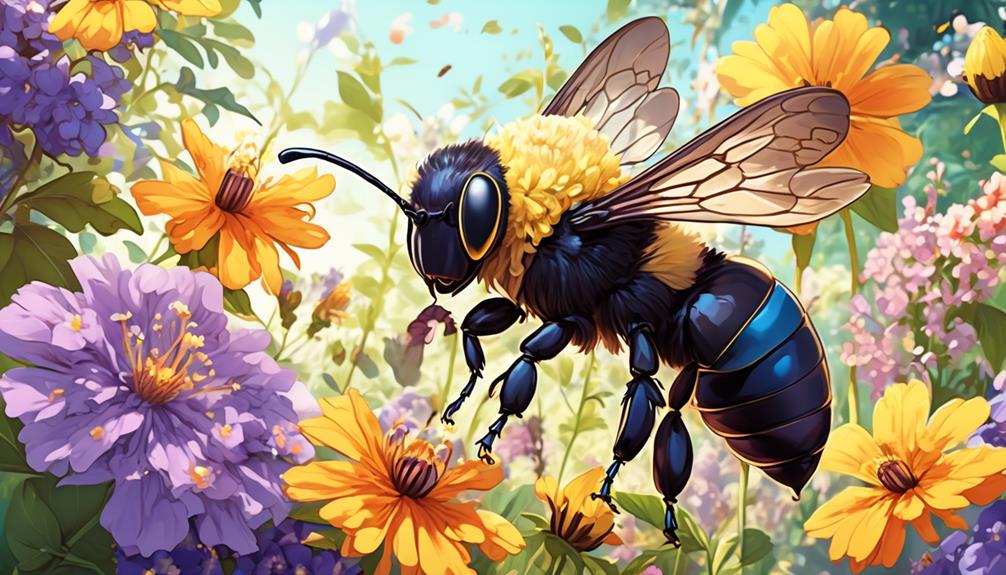
While you might view carpenter bees as mere pests, they're actually playing a crucial role in our ecosystem, particularly in the pollination of various plant species. Unlike honeybees that collect pollen in sacs on their legs, carpenter bees are messy feeders. As they move from flower to flower, they brush against the stamen, inadvertently collecting and dispersing pollen.
You'll often notice carpenter bees frequenting open-faced flowers. This is because their long, robust bodies and strong jaws can penetrate deeper into the plant's structure, reaching nectar other pollinators can't. This behavior makes them vital in the reproduction of certain plant species.
Another advantage is their unique flight pattern. Unlike other bees, carpenter bees can hover, enabling them to pollinate flowers from different angles. This attribute, combined with their size and strength, makes them efficient pollinators.
Carpenter bees also contribute to the food chain. They serve as prey for several bird species, like woodpeckers, and their larvae are sought after by wasps and beetles. Thus, while they might cause some structural damage, carpenter bees are ecologically significant, playing an integral role in both pollination and the food web.
Conclusion
So, you've taken a deep dive into the world of Xylocopa, or large carpenter bees. With their robust bodies, unique behaviors, and ecological significance, they're quite the marvel.
They're not just another bee, but an essential part of our environment. Understanding their scientific classification, physical traits, and habitat helps us appreciate their role in nature.
So, the next time you spot one, you'll know there's more than meets the eye.

